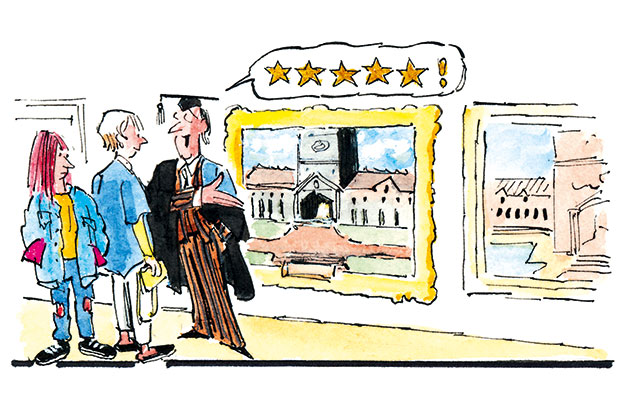Rugby
When Rugby School first allowed girls into its sixth form in 1976, just ten joined. In 1995 it went fully co-ed and today there are 373 female pupils. The ankle-length skirts that form part of the uniform look old-fashioned, but the school’s co-educational aproach is far more progressive. The transition wasn’t all smooth, though. When the first head girl was appointed, some boys hung protest banners in the Warwickshire school’s chapel and boycotted a service marking the bicentenary of former headmaster Thomas Arnold.
These days the head girl and head boy work seamlessly together and Rugby performs solidly in the league tables, with IGCSEs in most subjects and 29 different A-levels. As you’d expect, the school that invented rugby is strong on sport. There are 13 rugby pitches, three Astroturfs, tennis courts and an indoor pool, and its school gym is the only one in the world that’s a listed building.

Barlby Primary
This school in Ladbroke Grove, west London, is one of those that the Camerons were accused of ‘snubbing’ when they chose to send daughter Nancy to St Mary Abbot’s, two miles from their home. Never mind. Ofsted classes it as ‘outstanding’ despite serving an area that contains ‘significant deprivation’. Almost a third of pupils come from refugee or asylum-seeking families, but it performs well above average academically, as well as in the parental satisfaction ratings: 86 per cent think their children very happy at the school, compared to a 68 per cent national average. Barlby, -together with nearby Oxford Gardens school, has a close association with The Art Room, a charity that offers art as therapy. It was the first school to have its own Art Room -learning space — the Clore Art Room was officially named last year by the Duchess of -Cambridge, joined by artist Grayson Perry.

South Morningside
Lying to the south of Edinburgh city centre, this is one of the city’s largest primary schools, with around 600 pupils spread over three different sites, including an original Victorian school building which was paid for by the Scottish-born philanthropist Andrew Carnegie. There is a vast selection of after-school clubs, including skiing and snowboarding at the nearby Hillend slope, knitting, and chanter (the recorder part of the bagpipe), as well as breakfast and after-hours clubs for pupils whose parents require a slightly extended school day. The school’s latest report describes South Morningside pupils as polite, well-behaved and eager to learn, and praises the out-of-classroom activities, the French and German teaching, the school’s strong links with the local community, and the very hands-on and supportive Parent -Council, which organises many of the clubs and after-school activities.

Cardiff Sixth Form
In 2014, Cardiff Sixth Form College made headlines as an ‘obscure fee-paying -college’ that had overtaken the country’s best public schools and topped the independent school A-levels league. This year the school did it again when almost 93 per cent of its 133 A-level entrants won an A* or A. It’s clearly doing something right, so just what is the magic formula?
The college, proud of the fact that its students come from a wide range of backgrounds (in 2014, 84 per cent of A-level entrants were from abroad) believes that its teaching philosophy takes the best influences from both East and West. It prizes discipline and academic rigour, but also values the importance of creativity. From its beginnings in 2004, Cardiff has soared through the exam league tables, and it is eyed with some distrust by some of its competitors. But the results speak for themselves.







Comments